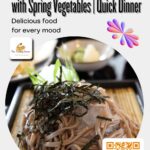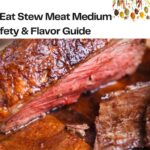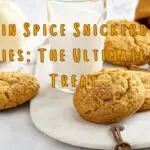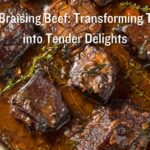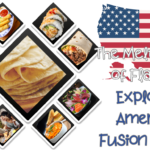We use affiliate links. If you purchase something using one of these links, we may receive compensation or commission.
Flavor: it’s at the heart of our dining experiences, the core of our culinary pursuits, and remains one of life’s exquisite pleasures. Delight and intrigue are nestled in every bite; science helps us unravel this sensory tapestry. This blog post is a deep dive into the art and science behind what makes food flavorful, insightful for gourmet enthusiasts, enlightening for food science students, and invigorating for the amateur chef.

The Basics of Taste
Walking through any kitchen or dining atmosphere, we encounter a concert of tastes: sweet, sour, salty, bitter, and umami, each a fundamental note in the culinary composition. But how do these tastes come to life? Our taste buds, those microscopic detectors, team up with receptors to translate chemical compounds into flavor experience.
The Science Behind Flavor Perception
Flavor perception is not just about taste—it’s an olfactory affair. Aroma plays a pivotal role, as the human nose can discern various smells. Flavor is a multisensory phenomenon where taste and smell intertwine, creating a full-bodied sensory experience. Culture and individual preference further paint this canvas of taste, adding depth and variation to each person’s flavor palette.
Now, let’s delve into the molecules that create these sensory wonders. Flavor compounds, formed during food preparation and cooking, hold the secrets to a meal’s allure. Crucially, the Maillard reaction – a dance of amino acids and reducing sugars under heat – gives rise to the rich depth of roasted, toasted, and grilled delights. The science of savor is steeped in such chemical choreography.
Culinary artisans have long exalted the power of flavor enhancement. Cooking is alchemy, and techniques ranging from seasoning to searing unlock new taste dimensions. Balancing the flavor wheel requires finesse—striving for a harmonious blend where no single note overpowers the others.
The Future of Flavors
As the curtain rises on the future of flavor, we encounter exciting trends at the intersection of technology and taste. Artificial intelligence now assists in concocting flavors that regale our palates. With sustainability as its sous-chef, this new age in culinary science pledges to deliver delectable flavors and mindful nourishment.
In our journey today, we’ve tasted only a sample of the science that flavors our world. Our relationship with food is eternal, and flavor, as Dr. Jane Doe so eloquently states, is truly the “gateway to the soul of food.” Let us take these insights, experiment in our kitchens, and dine with a new appreciation for the intricate ballet of chemistry, sensation, and creation that dances upon our tongues.
Taste, savor, explore—embrace the relentless pursuit of flavors in all their scientific splendor.


